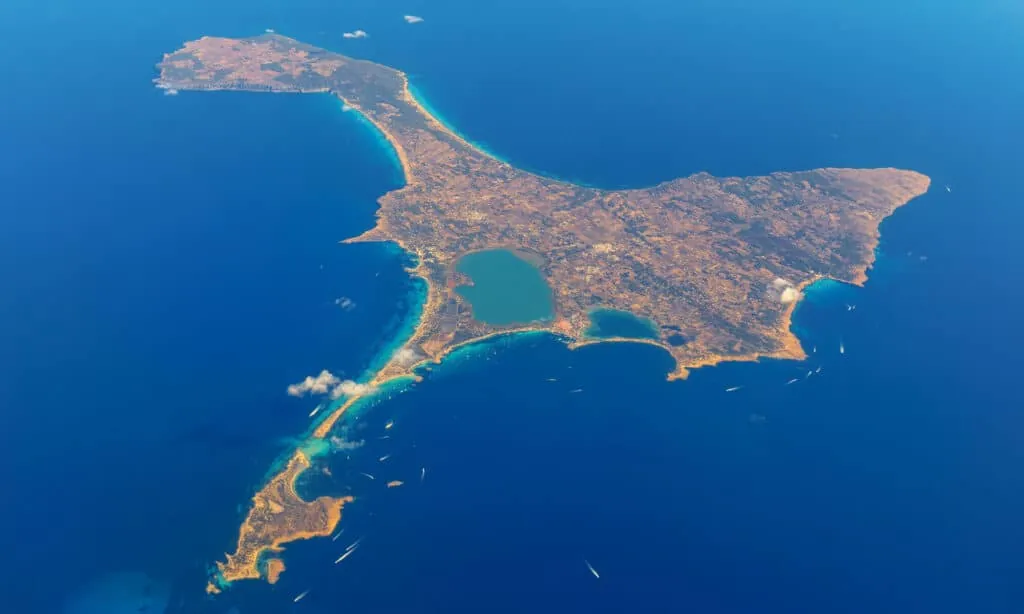Five Islands Where Local Wildlife Became Extinct Due to Invasive Snakes
The ecosystem plays a crucial role in sustaining life on this planet. Despite this, we haven’t always recognized its significance, resulting in costly mistakes that continue to impact us. As a result of human intervention, several regions, islands, countries, and even entire continents have reported significant losses in their plant and animal species.
Islands are bearing the brunt of the damage caused by invasive snakes, and it’s not hard to understand why. The following article delves into the impact of invasive snakes on local wildlife, and how it has led to the extinction of several species on five different islands. Moreover, this article provides insight into why islands are home to nearly 40 percent of all critically endangered animals on record, making it a must-read for those interested in understanding the ecological significance of these unique land masses.
Why Are Islands More Susceptible To Invasive Species?
An island is a landmass that is encircled by water, resulting in scarce resources like land, food, prey, and predators. Due to these limited resources, numerous native animals on islands have become specialist species, surviving on a restricted diet. Over time, some species have adapted to the challenges of island life through evolution. A prime example is the marine iguana, which inhabits the Galapagos islands and has developed the unique survival mechanism of diving underwater in search of food.
Island ecosystems are notably delicate due to their limited resources and unique native species. Introducing a new species with a comparable diet to any specialist species already present on the island can lead to significant issues, particularly if the island lacks predators for the new species. This can result in reduced food availability and increased competition for the native species, as well as overhunting of the prey. Ultimately, both the native species and the prey are endangered by such a scenario, increasing their risk of extinction.
It’s worth noting that invasive species tend to be generalists rather than specialists. This means that they will move on to another species once they have hunted one to extinction. Unfortunately, this pattern continues until the entire island’s wildlife is wiped out. This is a common occurrence, and research has found that invasive species are the main cause of wildlife extinction on islands. Shockingly, invasive species are responsible for around 42 percent of all threatened or endangered species, according to studies.
It’s an alarming issue that many unique species residing on islands worldwide can’t be found anywhere else. The major concern is that approximately 1189 vertebrate species that are highly endangered are located on 1288 islands, and once they go extinct, all the knowledge that could be gained from studying them is lost forever. The reason behind this is the invasion of non-native species, which is mostly attributed to human activity. Without human intervention, these animals that have now turned into invasive species would never have been able to migrate to their new habitats.
5 Islands Where Invasive Snakes Caused Local Wildlife To Go Extinct
Local wildlife extinction has been caused by invasive snake species on five islands, namely Ibiza, Guam, Mallorca, Canary, and Formentera.
Ibiza
The popularity of Ibiza is on the rise, but not for a good reason. The population of Ibiza wall lizards, the last remaining endemic vertebrates on the island, is being threatened by the invasive horseshoe whip snakes. Studies have shown that these colubrid snakes have been feeding on the Ibiza wall lizards, making up at least 56 percent of their diet, which has led to a decline in their population.
According to previous studies, the snake made its way to Ibiza by stowing away on ornamental olive plants that were being transported to the island from other areas in the Iberian Peninsula. As a result, these snakes now occupy almost half of the island’s land, which accounts for around 43.04 percent of the habitat of Ibiza wall lizards.
Guam
Located in the southernmost parts of the Mariana Islands, Guam stands as the largest island. Unfortunately, the island is currently home to around four invasive animal species, with the brown tree snake causing the most catastrophic effects. As per the Invasive Species Compendium, this snake has resulted in the extinction of two of Guam’s three native bat species, and over 50% of the island’s native bird and lizard species have been wiped out.
As highly agile climbers and swift movers, these snakes pose a significant threat to native pollinators, ultimately leading to the decline of native plant species. Ecologists have also noted a startling increase of nearly 40% in the spider population on Guam compared to its surrounding islands, attributed to the absence of birds that were once natural predators of the arachnids.
Mallorca Island
The Balearic Islands, a Spanish archipelago, are home to Mallorca, the largest island amongst them. Unfortunately, this beautiful island has been invaded by the false smooth snake, a colubrid snake that has become a relatively common sight on the island. It is believed that these snakes were introduced to the island during historic or prehistoric periods. Although they pose a significant threat to Mallorca’s ecosystem, they have been present on the island for so long that they are now regularly spotted.
It is believed that the species caused the extinction of Lilford’s wall lizard, a native lizard species of the Balearic Islands. However, this is not the only invasive species that poses a threat to the ecosystem. Exotic pets that escape their owners also end up in the wild, spreading and becoming a hazard to the environment.
Canary Islands
Located off the northwest coast of Africa, the Canary Islands are a much-loved Spanish archipelago. However, the introduction of the California king snake in 1998 on Gran Canaria led to a significant problem that persists to this day. Despite the best efforts of the Canary Islands Government to control their spread, the species has continued to expand, causing concern amongst locals and visitors alike.
According to a survey, the Gran Canaria skink, Boettger’s gecko, and the giant lizard of Gran Canaria, all native reptiles of the Canary Islands, have been severely affected by this particular snake. It is noteworthy that two of these species play a crucial role in plant reproduction and dispersal, while all three species contribute to maintaining a balance in the populations of certain invertebrates.
Formentera Island
The Balearic archipelago is home to Formentera Island, the tiniest among all other islands. This island is a popular tourist destination, thanks to its stunning waters that attract visitors from all over the world. However, despite its picturesque beauty, Formentera Island is facing a challenge in the form of ladder snakes, an invasive species that poses a significant threat to the survival of some of its indigenous species.
According to research, the ladder snake’s diet is mainly composed of the Ibiza wall lizard, which is a native species of the island. Surprisingly, these lizards account for up to 40 percent of the snake’s diet. However, the island government and other neighboring island governments consider the Ibiza wall lizard an invasive species.
Final Thoughts
Other islands, such as Hawaii, are already taking steps to eliminate their seven invasive snake species to prevent any harm to their fragile ecosystem. It’s crucial to acknowledge the severity of invasive snakes as a significant issue. Thus, before making the decision to own a pet, it’s essential to carefully consider the long-term feasibility of such a responsibility. Releasing a pet into the wild may appear to solve a minor problem for you, but it inevitably creates a larger issue in the long run.
Read More:







